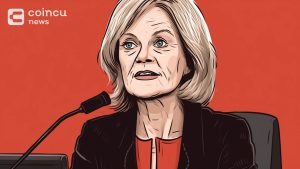Consumers could soon see the Federal Reserve’s strongest action in decades.
There is growing speculation that the US Federal Reserve will raise rates by the most since 2005. According to CME Group’s FedWatch, Goldman Sachs is betting the Fed will hike rates by 7, while traders say the figure will be at least 6.
Others are beginning to speculate that January’s pathetic inflation could prompt the Fed to start its tightening cycle on a strong note: massive hikes of up to half a point, a move higher since May 2000.
2022 is likely to be a busy year for Fed policy, as minutes show some officials expect to downsize their nearly $9 trillion bond portfolio later this year. meeting in January.
However, the Federal Reserve appears to be doing more harm than good to an economy experiencing the worst inflation since 1982.
Controlling inflation is a key concern for Fed officials as prices have risen to nearly four times the Fed’s target and show no sign of slowing down. But the danger is that the Fed could exacerbate the downside, slowing down the economy too quickly and injecting too much liquidity into the market at once. Fiscal stimulus is also fading, while at current growth rates the economy is expected to stabilize over the next two years, a pace that is likely to be slow given the long-term trend of world population ageing.
Ryan Sweet, senior director of economic research at Moody’s Analytics said:
“The economy doesn’t need additional stimulus… the Fed needs to solve this problem. It will be a challenging year.”
The market fears that ‘controlling inflation’ means the start of a recession
Now recession fears are spreading. For example: 10-year Treasury yields are not growing at the same rate as 2-year Treasury yields, adding to the evidence that the 2-year yield could soon be well above the 10-year yield. Divergence between bond yields, or the yield curve, has long been used as a recession indicator on Wall Street. When the indicator flips, it shows that investors are predicting a recession.
So far in 2022, the market hasn’t really been stable as investors showed concerns about recession risks. The S&P 500 fell nearly 10% in late January but has since recovered about a fifth of the points it lost. The Chicago Board Options Exchange’s market volatility indicator is up more than 69% this year.
Part of the inflation fear has been that a recession is the only solution. The market has historically endured a similar period during the inflation stagnation of the 1970s and 1980s.
Consumer prices rise to their highest level since 1982
Inflation has skyrocketed as a result of the pandemic, prompting the Federal Reserve’s current suite of measures.
Inflation rose after the pandemic | Source: FRED Department of Labour, February 2022
In the past, during the Great Recession, the Fed has raised interest rates to the 15-20% target range. That’s a thing of the past on Wall Street.
Greg McBride, CFA, Director of Financial Analysis at Bankrate shared:
“The likelihood of the Fed raising interest rates significantly is very high. Take a look at the last three tightening cycles: two of them ended in recessions and only one that didn’t cause a recession where the Fed had to reverse course and start cutting rates. But this time, history is not on their side.”
How Aggressive Will the Fed Be in Raising Rates in 2022?
McBride said a half-point hike in interest rates could give the Fed more time to see how the economy is doing.
“Prevention is better than cure. If the Fed decides to hike rates, they don’t have to keep raising rates too high for long or all at once, or that would trigger a deeper recession.”
Whether the Fed succeeds in March will depend in part on consensus. St. Louis Fed Chairman James Bullard expressed support for the Fed’s aggressive move. In an interview with Bloomberg on February 10, he said he would like interest rates to rise by 100 basis points in July.
However, San Francisco Fed Chair Mary Daly said that “sudden and aggressive action could really destabilize the growth and price stability that we want to achieve.” This shows that it supports a modest rate hike in March and then makes the next decision based on market reaction.
In his most recent public appearance after a meeting in January, the central banker said officials have yet to make a final decision on whether to raise rates by more than half a point. Instead, he revealed that the pandemic has disrupted the work of policymakers, recognizing that the economy can evolve in ways officials don’t expect.
Fed rate hike depends on inflation and jobs data
However, officials discussed phasing out monetary accommodation “at a faster pace than currently expected” if inflation doesn’t ease. All of this shows that the rate at which the Fed raises interest rates depends on how the economy develops.
Since December, Fed policymakers saw inflation fall to 2.6% at year-end before the Labor Department’s Consumer Price Index (CPI) showed prices had risen 7%, 0.5% in January.
While post-pandemic cuts are expected and supply chain shortages are showing signs of easing, inflation is likely to last longer. Many workers have started demanding a pay rise to cope with the rising cost of living, while a tight labor market has also prompted many companies to decide to raise wages for their employees. The employers’ labor cost index rose by 4.5% in the last three months of 2021, hitting the highest level on record.
In addition, employers added 467,000 jobs in January, showing that hiring remains stable despite the surge in new Omicron infections.
It takes time to test the impact of rate hikes on the economy
On the other hand, it takes time to assess the impact of a rate hike on the economy. Experts say it could take a year to gauge the effectiveness of rate hikes, increasing the risk that the Fed will use excessive tightening tactics. This could prompt the Fed to take a less aggressive stance and rates could rise a quarter point in March.
Bill English, a finance professor at the Yale School of Management who worked for the Fed for 20 years, emphasized:
“If we balance the risks and aren’t overly concerned about a slowdown in the economy while we’re more concerned about inflation staying high and affecting price and wage setting, the Fed will have to make decisions more quickly. Delays only make things more difficult because more time is needed to gauge how the economy will play out.”
Join CoinCu Telegram to keep track of news: https://t.me/coincunews
















